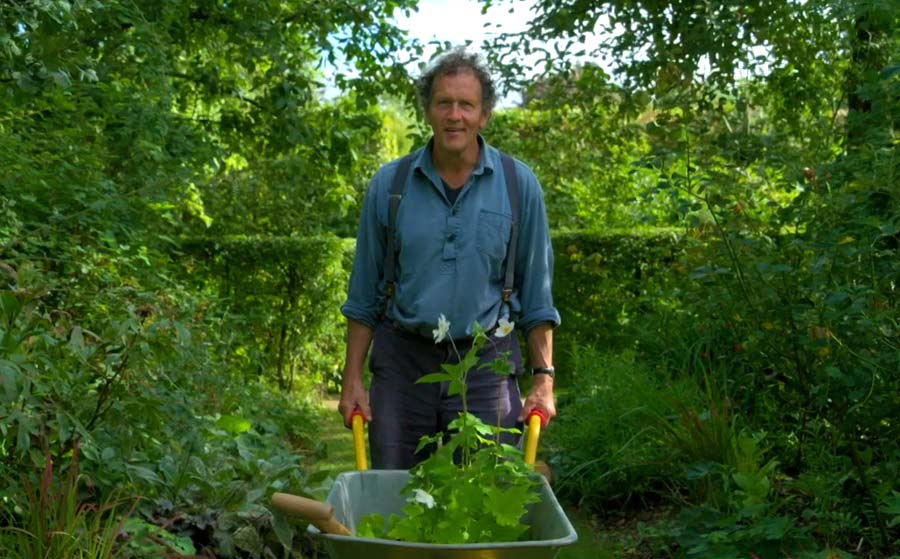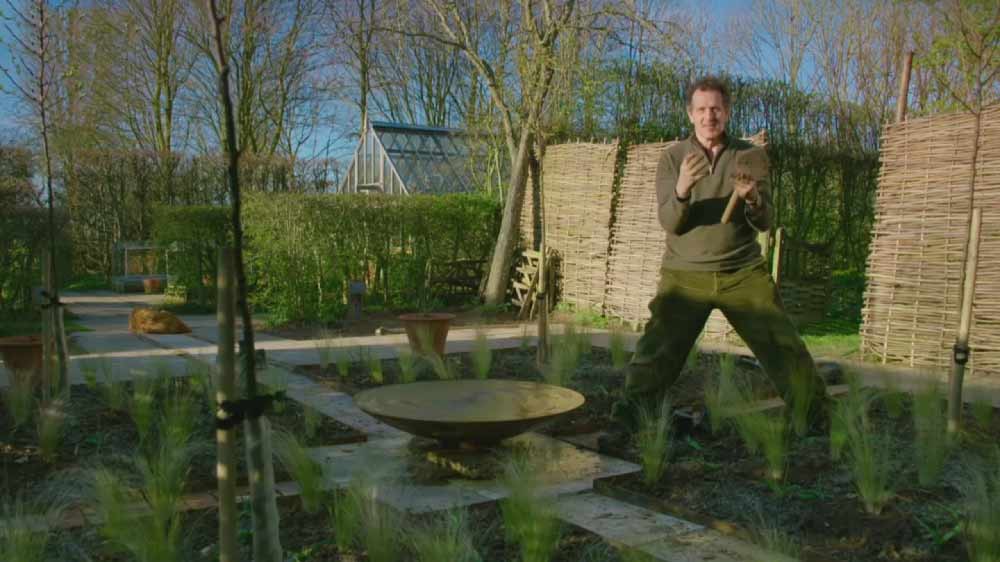Gardeners World episode 27 2019: it is a full hour of gardening from Longmeadow and Monty adds autumn perennials to his borders, shows how to take root cuttings and has plans for next year when he plants bulbs for spring colour.
On her Kent allotment, Frances Tophill catches up on some seasonal sowing and invites a special guest to help her with a small building project. Nick Bailey is in Cambridge University Botanic Garden, where we find out how and why some plants produce their scent at the end of the day and we return to the wildlife garden of Kate Bradbury to find out about the lives of solitary bees.
In Dorset, we meet a gardener who has dug up his front lawn to accommodate the flowers and vegetables he loves to grow for the garden and the show bench.
Gardeners World episode 27 2019
Naturalising bulbs in grass
Drifts of daffodils, snowdrops and crocus in open grass are one of the classic signs of spring. Although they look like the work of nature, they are simple to create and will last for many years. Naturalising bulbs is a great way to brighten up lawns, verges and wildflower areas in spring. In areas of grass, choose bulbs that complete their growing and flowering early, such as crocus. Most daffodils also do well in grass, but leave at least six weeks after flowering before mowing, and ideally leave until foliage goes yellow and straw-like.
Wild daffodils
It is also known as the ‘Lent lily’ or ‘Easter lily’ since it often blooms and fades within the Lenten period. The wild daffodil is smaller than horticultural varieties, with paler petals and a deep yellow trumpet-like tube. The leaves are grey-green, thin, long and flattened. It grows in groups so can be quite an impressive sight.
Using seaweed in the garden
Seaweed has been used as a soil improver for centuries, particularly in coastal areas. Seaweed contains several useful plant nutrients, including nitrogen, potassium, phosphate and magnesium. There are dried and liquidised forms available from garden centres and seaweed is a common additive to fertilisers, both organic and non-organic.
Potato and tomato blight
Potato and tomato blight, properly called late blight, is a disease of the foliage and fruit or tubers of tomatoes and potatoes, causing rotting. It is most common in wet weather. Potato and tomato blight is a disease caused by a fungus-like organism that spreads rapidly in the foliage and tubers or fruit of potatoes and tomatoes in wet weather, causing collapse and decay. It is a serious disease for potatoes and outdoor tomatoes, but not as common on tomatoes grown in greenhouses.
Box blight
Box blight is a fungal disease of box resulting in bare patches and die-back of box, especially in topiary and parterres.
Blight doesn’t kill the roots of box plants. Cylindrocladium buxicola is divided into two genetic types which differ in their sensitivity to some fungicides (triazoles). It largely affects Buxus spp. (box) in the UK, but other plants in the Buxaceae family are also susceptible.




